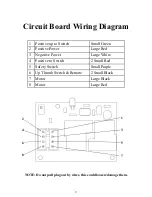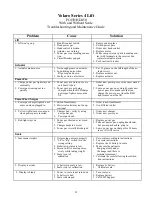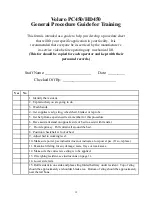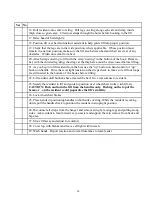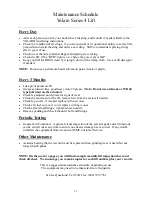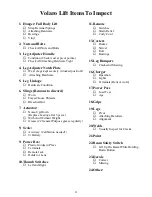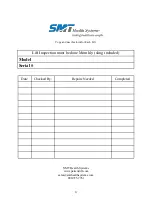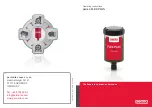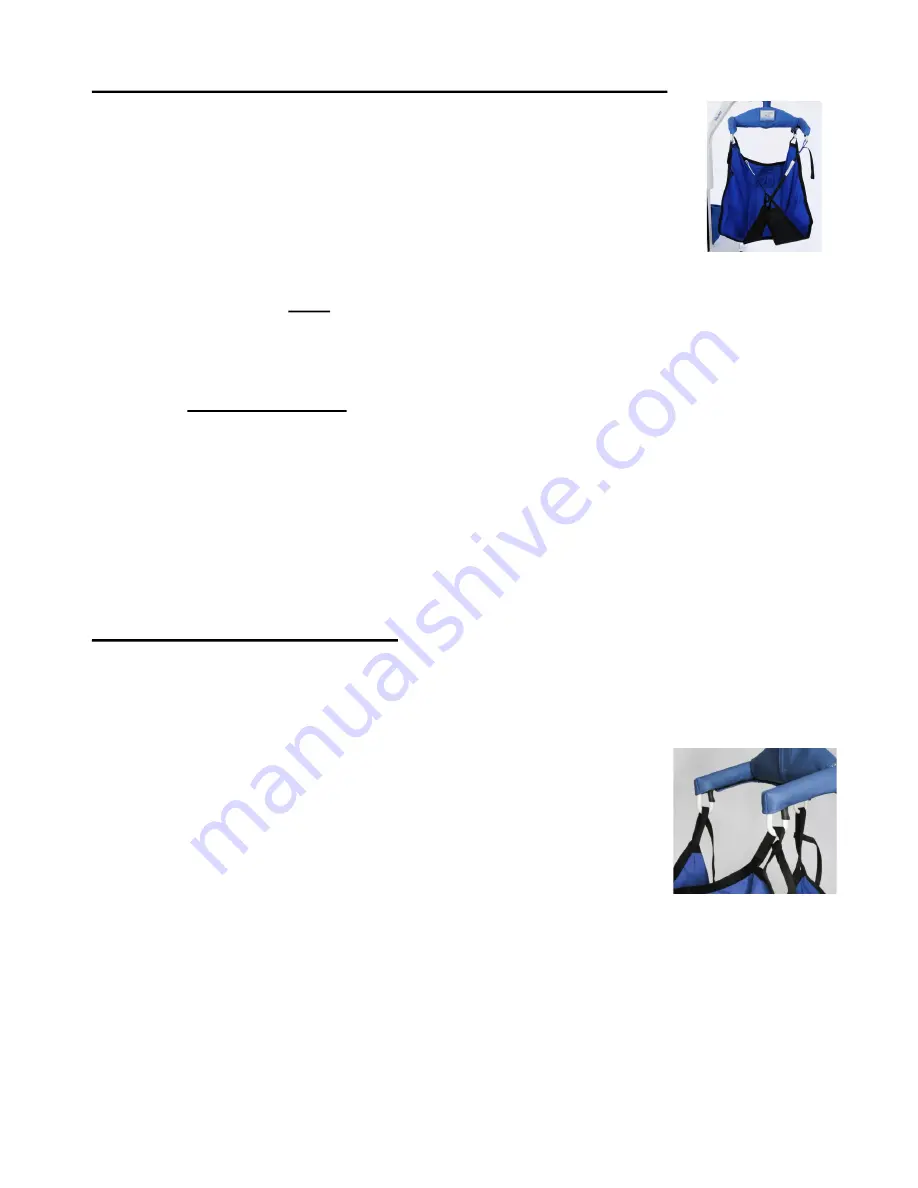
Selecting the Style and Size of Sling to be Used:
The first step is to select the
Style
of sling to be used. The most common
sling is the divided leg sling (shown). This sling is designed to be removed from
the person after they have been transferred into their wheelchair. This way they
do not have to sit on the sling throughout the time they are sitting in their chair.
If you find it difficult to remove a divided leg sling from behind a person while
they are seated in a wheelchair, you may choose to leave it behind/under them.
Be sure to observe the correct position of the sling before you lift the person.
The sling may have repositioned. If a person has leg discomfort while you use
the divided leg sling on them, another option would be the hammock sling. If you are lifting a single
or bilateral amputee, you
must
always use a hammock sling. The hammock sling comes with or
without the commode hole.
The second step is to determine the proper
Size
. Lay a sling across the persons chest. If
it’s the proper size sling, you will note 2
-8 inches of extra material extended past the side of each
arm.
NOTE: This is only a guide. Body shapes vary so much that fitting the patient to the
sling ultimately needs to be determined by the health care professional.
If you observe
little or no fabric extended past the arms, you must upgrade to a larger sling. All styles have color
coded positioning handles to easily indicate the size of the sling. (Page 7) The loops on the straps
are color coded to match each side in positioning the sling to the desired location. Make sure you
use the same color loop on the “J” hook directly across from each other to keep the sling even.
Changing the orientation of these loops will change the angle of the person being transferred. This
comes in handy for charting the colors that would work best for each individual. All sling styles
come with built in positioning handles on the back of the sling. These always face out and are used
to position a person back in a chair.
Lifting from Chair to Bed:
To apply the divided leg sling on someone sitting in a wheelchair, first lean the person
slightly forward to get clearance between the back of the person and the back of the wheelchair.
Keeping the sling from twisting, using the pockets in the back of the sling, make sure the sling is all
the way down and that there is no gap behind the person. If the sling is not all the way down, it will
not come under the leg very easily. Work the sling alongside the legs,
getting as much material toward the front of the chair as possible. Raise the
leg and pull the material through, preventing any wrinkles. Crisscross the
inside flaps with the main loops, then thread the strap with the color-coded
loops through the main loop. Crisscrossing the inside flaps will keep the legs
together for a more comfortable and dignified transfer. Now that the sling is
positioned, bring the lift toward the person, open the legs of the lift to the
wide position, lower the hanger until the desired colored loops can be
hooked on the hanger.
Note: Raise until there is tension on the straps, then double check
to make sure sling loops are nested into the bottom of the hooks properly.
Now push the up button on the handle or use the hand control to raise the person just high enough
to clear the chair. Position the lift so that the person will be lowered to the proper position onto the
bed. Lower the lift. Once there is plenty of slack in the straps, remove the loops from the hanger
and pull the lift out of the way. Unthread the straps from the main loops. Roll the person on their
side and fold the sling, then roll to the other side and remove the sling.
8

















